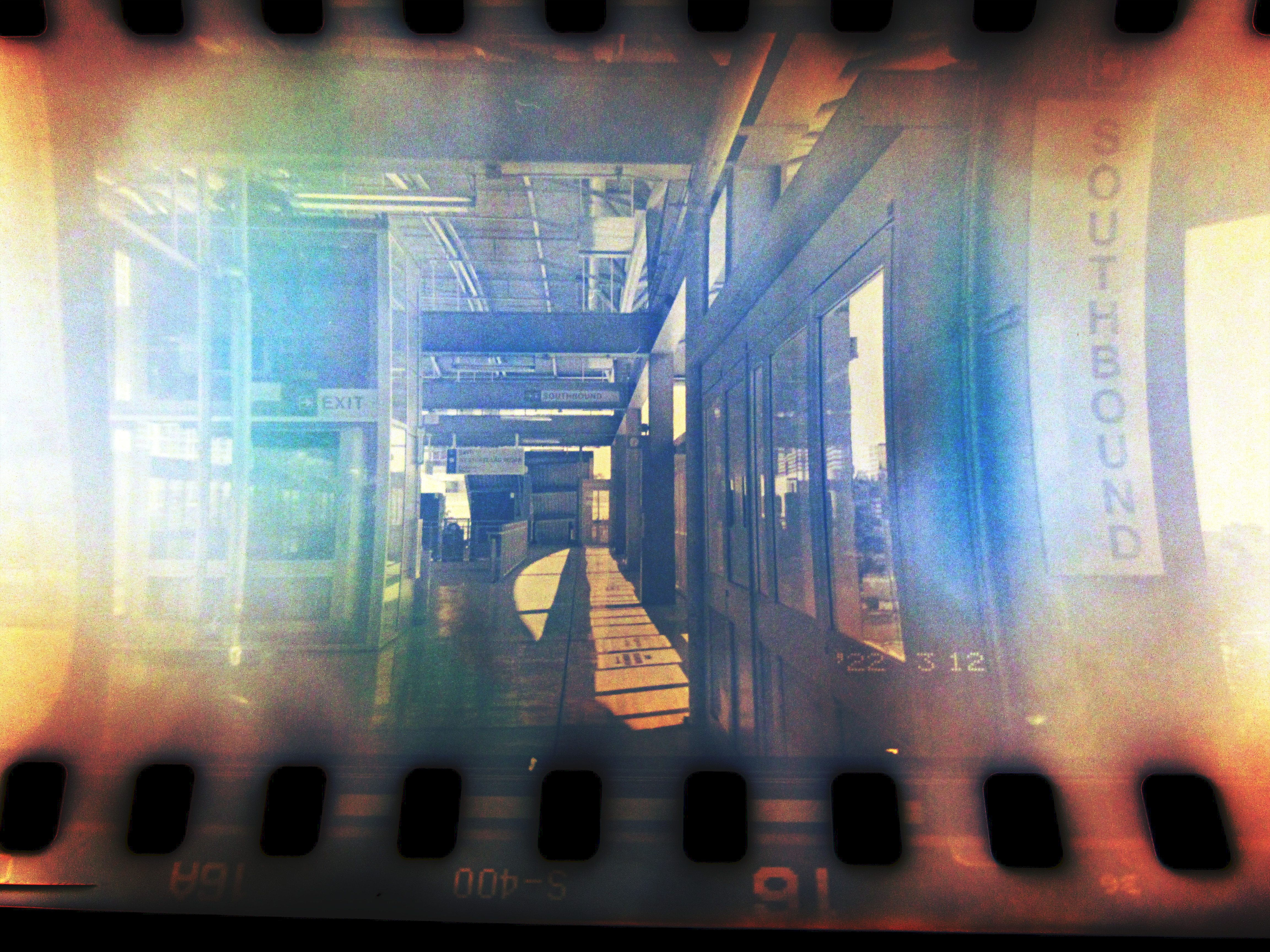 the periplaneta planet
the periplaneta planet

2024-03-18
developing my first roll of film with caffenol
on saturday, my blood pressure dropped out of nowhere and i passed out, twice, hitting my face, hard, onto the kitchen floor, bruising my zygomatic in the process. i may have had a concussion - it was way too bright when i walked to the grocery store, suggesting my pupils weren’t constricting properly? anyway - on sunday, i developed my first roll of film.
it was a roll i’ve had for a while now - of the cheapest 35mm film you can find at your local superstore: fujicolor superia 400 - and it expired back in june 2019. i don’t know why it took me over five years to finish a roll, but i guess it’s because cell phones exist. the film was shot on a nikon point & shoot that used to belong to my parents. looks like you can buy a used one for about thirty bucks on ebay.
when i first bought the roll, i was expecting to either send the film out to a lab (i think walgreens still develops film!?) or try to develop it at home with c41. in those five years, though, i got really into coffee (sorry.) and if you’re weird about coffee and film photography, you will inevitably find out about caffenol, a process for developing b&w film using the phenols found in coffee - usually instant coffee, because it’s cheap. (fujicolor, as you might expect, is meant for color film, but you can still develop it using caffenol to pretty decent results.) as you might have been able to tell from this website, i am a big fan of all things jank and diy, so i immediately fell in love with caffenol as a concept. adjusting the delta-std recipe from caffenol.org with tips from this reddit post, my caffenol recipe is as follows:
- 500 mL water
- 3 g ascorbic acid (in the form of 3 packets of emergen-c)
- 4 g sodium carbonate (in the form of 6 g baking soda cooked in a cast iron pan for a while)
- 7 g instant coffee
i know. how am i the type of person to record their recipe in gram measurements, but yolos their film developer with emergen-c and by cooking baking soda in a pan for some undetermined time? all i can say is that it worked, so it’s probably fine. the usual caffenol process is done with pure vitamin c powder, but i didn’t want to buy that, had emergen-c at home, and other people have had good results with it. i think when you cook baking soda (sodium bicarbonate) into sodium carbonate, the general rule of thumb is that when the baking soda has lost about 1/3 of its weight, then it’s all sodium carbonate, hence the 6 g to 4 g measurement up there. btw, don’t try cooking your baking soda in the air fryer. the convection will send it flying everywhere and then you’ll have to clean the air fryer so the baking soda doesn’t bake into sodium carbonate and corrode the shit outta that thing over time. also, i tried filtering the caffenol with my v60, but it immediately stalled and would’ve taken forever to draw down, so i gave up and filtered it through an aeropress with two paper filters. i recommend being gloved for this entire process because sodium carbonate is fairly caustic.
as for the actual developing process, i made a shitty darkroom out of my half bathroom by taping tinfoil over the gaps in the door; my reasoning being: if tinfoil is good enough to prevent degradation of light-sensitive probes in fluorescence in situ hybridization, then surely it’s good enough for developing film? of course, a 50 mL tube requires a vastly different amount of tinfoil than an entire ass door. it worked, but next time i’m probably just gonna use duct tape. i loaded the film into some cheap developing tank i bought off amazon and pre-soaked with tap water for 5 minutes. dumped it out (the water turned purple!?), poured in the caffenol and let it stand for 25 min, inverted 4 times, and then let it stand for another 25 min. dumped it out and poured in a stop bath of literally just tap water. my fixer was made up of 150 g iodized salt in 500 mL water, as per this video. i let it sit for 24 hours and then washed it and let it dry, hung up with a pants hanger and weighted with a bag clip.
the roll of fujicolor has 36 exposures, but i exposed several of them to plain light by doing a really bad job at loading the film in and out of the camera. i “scanned” the negatives by placing them against a lamp and taking pictures of them with a twenty-something year old digital camera (a canon powershot, if you must know). really super classy, but it did a significantly better job than my phone camera, so i can’t complain at all. i put all the images into gnu image manipulation program (i abhor its acronym), rotated all of them 180 degrees because i took all the images upside-down (oops), flipped them because i accidentally took the images from the wrong side of the negatives (oops), equalized and then inverted them. honestly? considering i thought this would be a complete and utter failure (on account of the expired film and the light exposure and the x-ray exposure from airport security and the diy developer and the lack of film scanner and…), i think this might be a massive success. hoo-ray for trying new things!


























